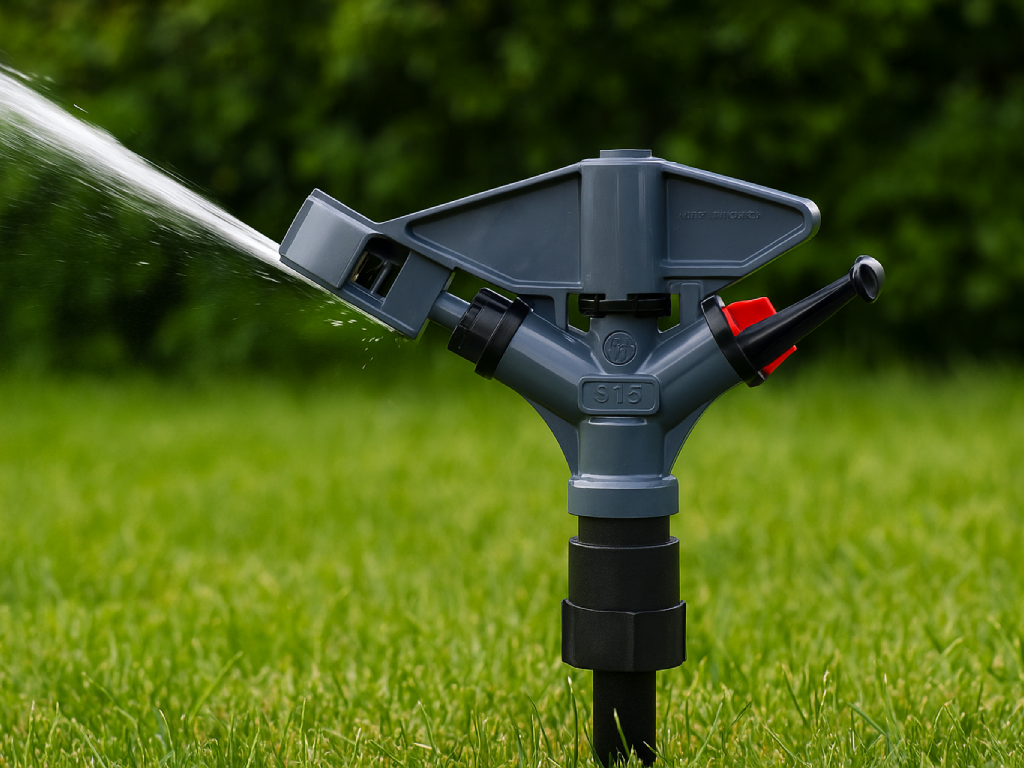
Sprinkler Irrigation
Efficient use of water and delivering the right amount of moisture to crops have become essential goals in today’s agriculture. One of the most reliable and widely used methods for achieving these goals is sprinkler irrigation. This system provides even water distribution over large areas and is commonly preferred for both farming and landscaping applications.
So, what exactly is sprinkler irrigation, how does it work, and what are its advantages?
What is Sprinkler Irrigation?
Sprinkler irrigation is a method in which water is delivered through a system of pipes under pressure and sprayed into the air through sprinkler heads, mimicking the effect of natural rainfall. This ensures that the soil surface receives uniform moisture, promoting healthy plant growth and minimizing water waste.
Sprinkler systems are suitable for a wide range of uses, from agricultural fields to urban green spaces.
Key Components of a Sprinkler Irrigation System
A standard sprinkler system includes the following components:
- Main and lateral pipelines
These carry water from the source to the sprinkler heads. - Sprinkler heads
Devices that distribute water either in a fixed pattern or by rotating. - Nozzles
Control the water flow rate and spray pattern. - Pressure regulators
Maintain consistent water pressure throughout the system. - Valves and control units
Allow manual or automated system operation.
Advantages of Sprinkler Irrigation
Uniform Water Distribution
Water is applied evenly over the entire area, ensuring all plants receive equal moisture.
Ideal for Large Areas
Perfect for fields, lawns, orchards, and large garden areas.
Soil Protection
Reduces surface runoff and erosion through slow and steady application.
Water and Energy Efficiency
Smart timers and sensors can help manage water use, reducing waste.
Automation-Friendly
Sprinkler systems can easily be integrated with timers and moisture sensors for efficient, hands-free operation.
Where Is Sprinkler Irrigation Used?
- Agricultural lands (grains, vegetables, fruit trees)
- Lawns and landscaping
- Ornamental plant production
- Greenhouses and nurseries
- Parks, gardens, and recreational areas
- Sports fields and golf courses
Sprinkler vs. Drip Irrigation: What’s the Difference?
| Feature | Sprinkler Irrigation | Drip Irrigation |
|---|---|---|
| Irrigation Method | Overhead spraying (rainfall-like) | Direct delivery to root zone |
| Water Distribution | Broad and uniform | Localized and low-flow |
| Evaporation Risk | Moderate | Very low |
| Best for | Large open fields, turf, orchards | Greenhouses, row crops, vineyards |
| Weed Growth Risk | Moderate | Low |
| Automation Compatibility | High | High |
Both systems serve different purposes, and in some cases, a combination of sprinkler and drip irrigation is the most effective solution.
STF Sprinkler Irrigation Solutions
STF offers high-performance, durable sprinkler irrigation systems designed to meet the diverse needs of modern agriculture. Our sprinkler heads are manufactured from UV-resistant, impact-resistant plastic materials and optimized for various pressures, flow rates, and coverage radii.
Features of STF sprinkler products include:
- UV-resistant high-quality body
- Modular design for easy installation
- Fixed and rotating models
- Excellent wind resistance
- Interchangeable nozzles
- Spray coverage from 6 to 15 meters
From large-scale farming to precision agriculture, STF has a solution for every field and crop.
Conclusion: Efficient Irrigation with Sprinkler Systems
Sprinkler irrigation is an essential tool for today’s farmers, offering even water distribution, reduced labor, and better crop performance. Its ability to cover large areas with consistent water delivery makes it especially valuable in open field agriculture and landscaping projects.
If you’re looking to optimize water use and boost productivity, STF’s professional sprinkler irrigation systems are the smart choice for a sustainable farming future.

